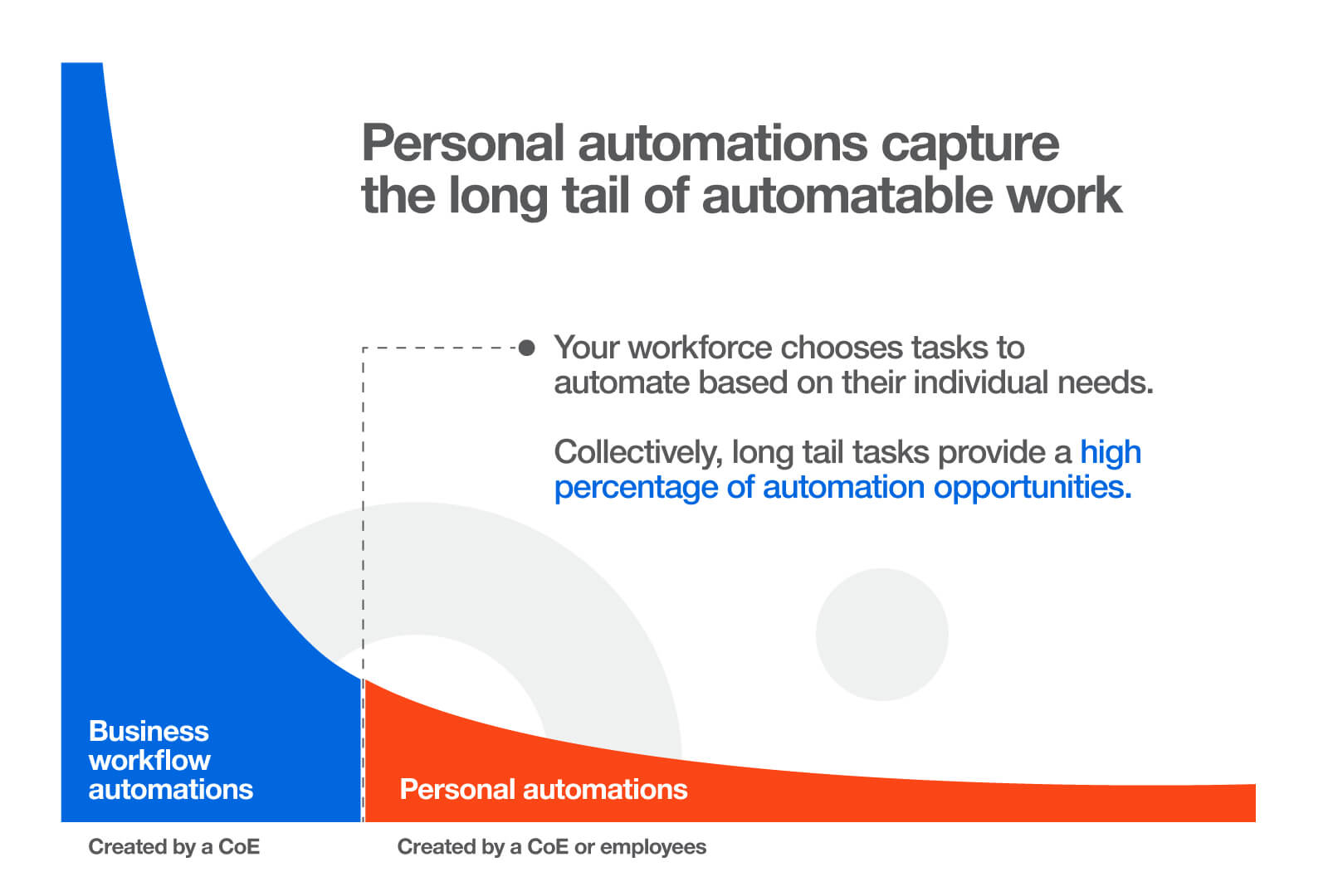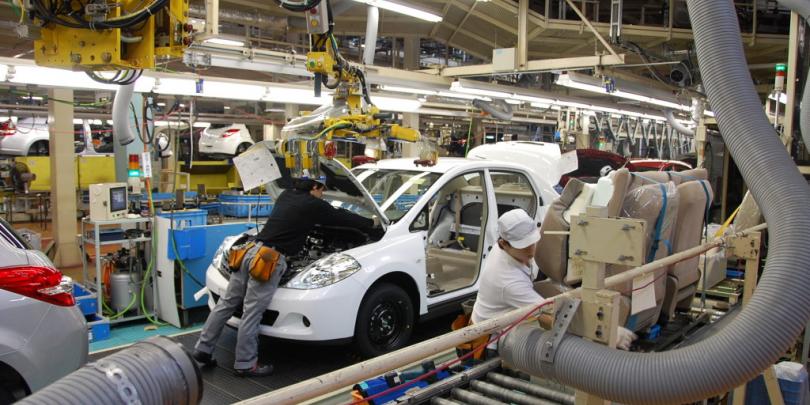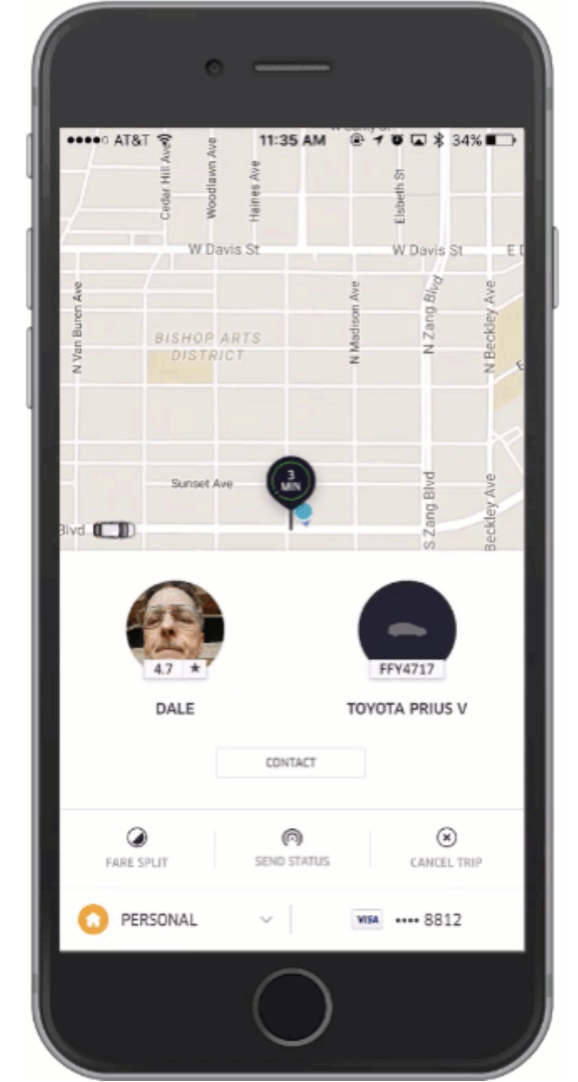Dear CIOs: Why You Need a Low-Code, Enterprise-Scale Strategy Now (Part 2)
Dear CIOs: Why You Need a Low-Code, Enterprise-Scale Strategy Now (Part 2)
Share at:

In our last post (part one of this two-part series), we discussed:
Why low-code adoption has accelerated
Benefits of low-code platforms (for business users, IT, and the organization’s bottom line)
Importance of democratizing building tools and governance systems
In this article, we’re diving into how low code is making chief information officers (CIOs) more competitive and encouraging spontaneous creation.
Businesses that democratize development will outpace those that don’t
Low code isn’t merely another tool that a business adopts. Low-code platforms empower a whole new category of employee: those who can do and build. We call them citizen developers.
Businesses with citizen developers will not only outpace businesses without, but also build up a competitive advantage that envious businesses can’t easily replicate. The key is decentralization.
Automation: a case study for decentralization
In the United States (U.S.), about 2.6 trillion hours of work a year is automatable. That means humans, collectively, are doing trillions of hours of tedious, manual labor. That's labor that software robots could do faster and better, without suffering a moment of boredom. Businesses and employees alike want to eliminate this kind of work.
These trillions of hours are hard to automate not because of the limits of technology but because of the limits of discovery and implementation. The long tail of automation shows that a plurality (+40%) of automation opportunities are discovered from the bottom up, not the top down.

In other words, everyday employees (not just the C-suite) are discovering these hours of automatable work.
A McKinsey report further substantiates this finding. According to McKinsey, the best automation programs are decentralized. They found that successful organizations were more likely to report that particular functions or business units are accountable for automation delivery. Less successful companies were more likely to say a central team had exclusive responsibility.
Long-term success relies on combining decentralization and leadership: give users the freedom to ideate and build, and your CoE power to prioritize, build, and distribute.
The best automation programs empower citizen developers rather than rely exclusively on leadership. So, you can imagine how a fully automated enterprise™ can move exponentially faster than a traditional enterprise.
Now imagine this same pattern replicated across all the functions and problems that low code can address.
Spinning the low-code flywheel
Businesses that scale automation to its fullest use an automation flywheel that enables them to move faster and generate more automation ideas. Employees use automation, which inspires them to submit ideas to the CoE. The CoE builds automations for employees, eventually leading to a breakthrough moment where citizen developers start to take on their own ideas.

A similar flywheel effect can spin for companies that implement low-code platforms. Just as the automation flywheel spins to generate ever more CoE automations, a low-code flywheel will generate ever more low-code solutions. We’re lucky enough to see this play out as our customers implement UiPath Apps, a robot-powered, low-code app platform.
This kind of progress doesn’t just add up; it compounds. When businesses learn a complex process—say, automation, or low-code software development—they acquire what business analyst Nathan Baschez calls “process power.”
Process power is when a business masters a process that is critical to creating customer value and yet is difficult for other businesses to copy.
The prime example, as Baschez points out, is Toyota, which mastered a new way of making cars—deemed “lean manufacturing.”

Other auto manufacturers, even those that understood the value of what Toyota had done, couldn’t immediately replicate its accomplishments. Toyota had process power and grew while its competitors floundered.
Businesses that master low-code platforms, and the governance systems that enable the distribution of low-code solutions, will have a similar kind of process power. A process power that other businesses can’t easily replicate.
Low-code will create the future of work we’ve been waiting for
Many future-of-work predictions fall flat because predictors don’t make clear how that future will actually turn out. To make effective predictions, we have to look at the systems that deliver the future.
The future of work depends on the future of business
Work exists within and depends on business. If you want to know what the future of work will be, then you have to know what the future of business will be.
To that end, look both toward companies that have succeeded in digital transformation and companies that have enabled those kinds of successes. Twilio is a prime example of the latter.
Twilio provides communications as a service. For example, when your Uber driver calls or texts you that your ride has arrived, Twilio is powering that text message.

Jeff Lawson, the visionary CEO of Twilio, built his $66.95 billion company by providing developers with the tools to build. As Twilio grew, and the API economy surged around him, Lawson discovered this wasn’t just the future of his business—it was the future of all businesses.
He writes in his book Ask Your Developer that “companies succeed at digital transformation not just by using software but by building software.” He calls this the “Build vs. Die” question, a framework that shifts software development from cost center to profit center.
He compares market competition to Darwinian competition: a “ferocious and relentless” struggle where those who can build will inevitably outcompete those who can’t.
APIs, like those from Twilio, make it easier for software developers to build. But APIs are still inaccessible to most business users.
Low-code platforms can turn business users into builders and make building more accessible. If businesses will live or die based on how many builders they have, then low code will be a deciding factor for the future of business.
Low code enables spontaneous creation and productivity
The future is fundamentally unpredictable, and future-of-work predictors tend to underestimate that. Lawson didn’t know he was part of the API economy when he was building it; he was just giving developers what they needed. But when developers built technologies he couldn’t have even envisioned, he realized this was the future.
The API economy is already here. The next paradigm shift will involve a similar level of unpredictability. Low code makes the future of work more unpredictable by arming business users with tools they haven’t had before to solve problems that have historically gone unsolved or unseen.
Automation provides another useful example. Automation platforms are on the cutting edge of real-world, low-code implementation. We’ve seen how businesses adopt automation, address low-hanging fruit, and scale their automation programs.
Other low-code implementations will have to surmount similar stages of growth. But amid those challenges is a potential that no one can predict. Who could have guessed, for instance, that software robots—originally designed for the back office—would be helping frontline healthcare workers schedule COVID-19 vaccinations? This is the future of work.
Competitive CIOs will start looking at low-code platforms now
The future is coming—and it’s coming fast. According to a Forrester Consulting paper commissioned by UiPath, “The world has seen more digital transformation in the past months than in the preceding five years.”
The future of work doesn’t exist in a vacuum. It will emerge from business processes and workflows that already exist; it will offer new solutions to old problems; it will involve new people, newly empowered.
Companies that leverage low-code platforms will be in the best position to expand the benefits of transformation.
If you want to know the future of work, trace it back to its likely origins: automation and low code.

Senior Product Manager, UiPath
Get articles from automation experts in your inbox
SubscribeGet articles from automation experts in your inbox
Sign up today and we'll email you the newest articles every week.
Thank you for subscribing!
Thank you for subscribing! Each week, we'll send the best automation blog posts straight to your inbox.



